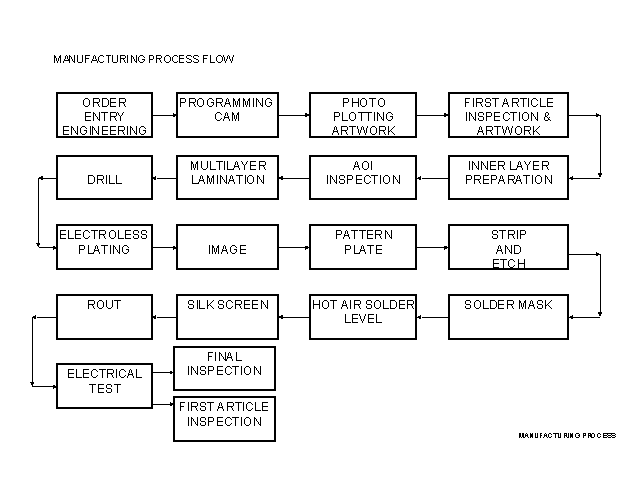

ORDER ENTRY / ENGINEERING PLANNING |
|
|
PROGRAMMING AND CAM |
|
|
INNER LAYER PREPARATION |
|
|
MULTILAYER LAY-UP |
|
|
MULTILAYER LAMINATING |
|
|
DRILL |
|
|
PATTERN PLATE |
||
|
STRIP AND ETCH |
|
|
SOLDERMASK |
|
|
HOT AIR SOLDER LEVEL |
|
|
ROUTING |
|
|
ELECTRICAL TEST |
|
|
FINAL INSPECTION |
|
|
FIRST ARTICLE INSPECTION |
|
|
Kindly provided courtesy of  CIRCUIT EXPRESS, INC.
CIRCUIT EXPRESS, INC.